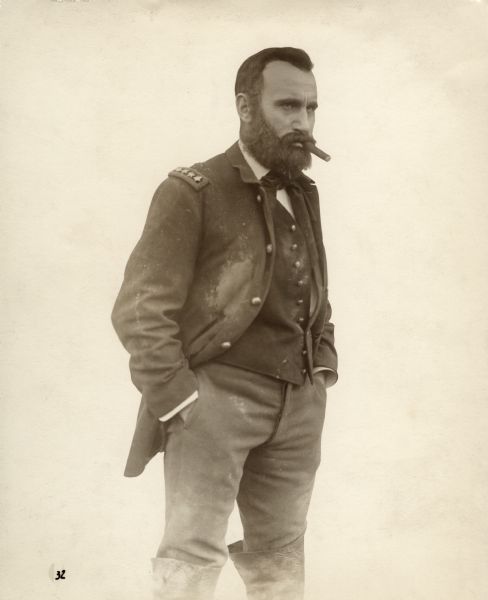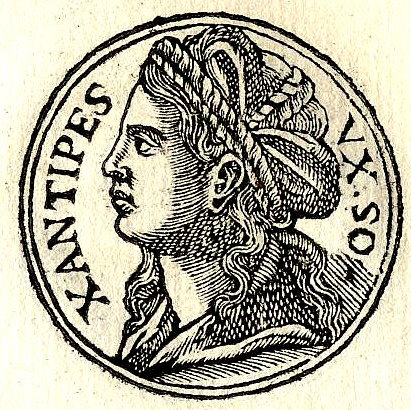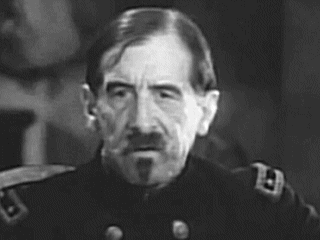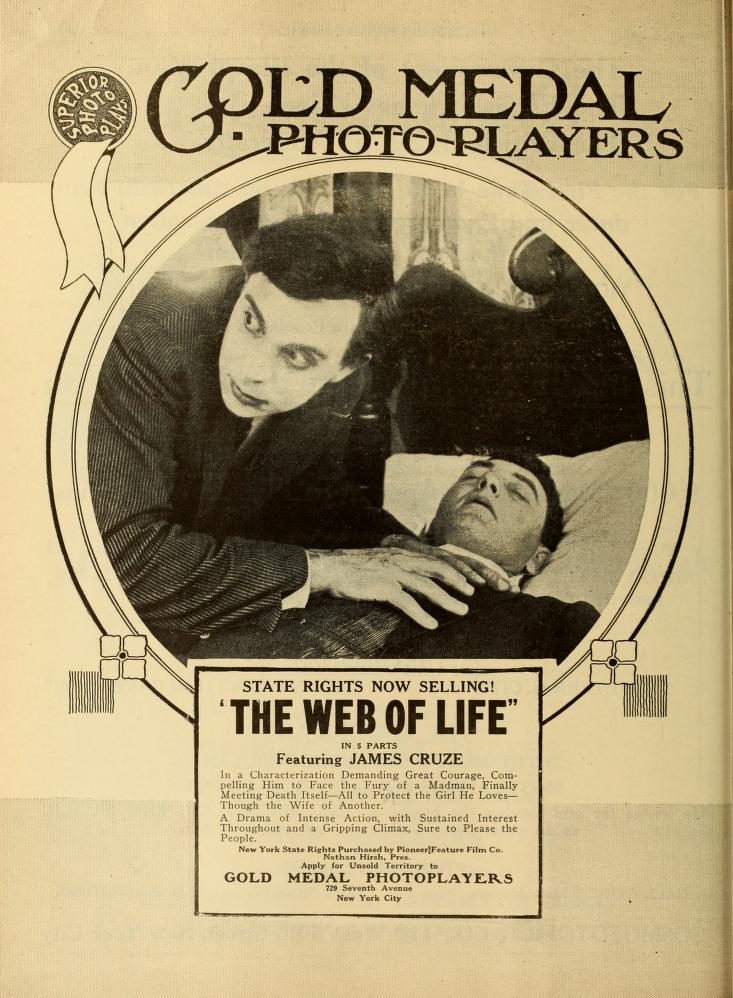|
Believe Me, Xantippe
''Believe Me, Xantippe'' is a lost 1918 American silent romantic comedy film produced by Jesse Lasky for release through Paramount Pictures. The film was directed by actor/director Donald Crisp and stars Wallace Reid and Ann Little. The film is based on a 1913 William A. Brady-produced play ''Believe Me Xantippe'' by John Frederick Ballard, which on the Broadway stage had starred John Barrymore. Plot As described in a film magazine, George MacFarland (Reid) makes a bet with two of his friends that, having committed a forgery, he will be able to elude the officers of the law for one year. As his friends are very thorough, he does not find it an easy matter getting around town. He finally goes to a small town in the west where he lives unmolested for eleven months. On a hunting expedition he meets Dolly Kamman (Little), daughter of Sheriff Kamman (Beery), who takes George to meet her father. As Dolly has fallen in love with George's photograph, he is a somewhat privileged pris ... [...More Info...] [...Related Items...] OR: [Wikipedia] [Google] [Baidu] |
Donald Crisp
Donald William Crisp (27 July 188225 May 1974) was an English people, English film actor as well as an early producer, director and screenwriter. His career lasted from the early silent film era into the 1960s. He won an Academy Award for Best Supporting Actor in 1942 for his performance in ''How Green Was My Valley (film), How Green Was My Valley''. Early life Donald Crisp was born George William Crisp at 3 Clay Hall Road, Bow, London, on 27 July 1882. He was the youngest of ten children (four boys and six girls) born to Elizabeth (née Christy) and James Crisp, a labourer. He was educated locally and in 1901 was living with his parents and working as a driver of a horse-drawn vehicle. Crisp made a number of claims about his early life that were eventually proven false decades after his death. He claimed that he was born in 1880 in Aberfeldy, Perth and Kinross, Aberfeldy in Perthshire, Scotland, and even went so far as to maintain a Scottish accent throughout his life in Holly ... [...More Info...] [...Related Items...] OR: [Wikipedia] [Google] [Baidu] |
Mary Young (actress)
Mary Marsden Young (June 21, 1879 – June 23, 1971) was an American stage, film and television actress whose career spanned the first sixty years of the 20th century. She started her career in the theatre and ended playing elderly ladies in film and lastly on television. Her first Broadway credit was in 1899. On stage she scored a memorable hit in 1913 playing opposite John Barrymore in the stage version of ''Believe Me, Xantippe''. 1924 saw her on Broadway in ''Dancing Mothers'' opposite John Halliday and Helen Hayes, who played the daughter later made famous by Clara Bow in a silent film. Beginning in 1905, Young and her husband, actor John Craig, operated Boston's Castle Square Theatre for 21 years. She was approaching 60 in 1937 when she made her first Hollywood movie. She made many television appearances in the 1950s and 1960s. Her last television appearance was in a 1968 episode of ''Gomer Pyle''. She and her husband, actor John Craig, had two children, the eldest o ... [...More Info...] [...Related Items...] OR: [Wikipedia] [Google] [Baidu] |
1918 Romantic Comedy Films
The ceasefire that effectively ended the World War I, First World War took place on the eleventh hour of the eleventh day of the eleventh month of this year. Also in this year, the Spanish flu pandemic killed 50–100 million people worldwide. In Russia, this year runs with only 352 days. As the result of Julian to Gregorian calendar switch, 13 days needed to be skipped. Wednesday, January 31 ''(Julian Calendar)'' was immediately followed by Thursday, February 14 ''(Gregorian Calendar)''. Events World War I will be abbreviated as "WWI" January * January – 1918 flu pandemic: The "Spanish flu" (influenza) is first observed in Haskell County, Kansas. * January 4 – The Finnish Declaration of Independence is recognized by Russian Soviet Federative Socialist Republic, Soviet Russia, Sweden, German Empire, Germany and France. * January 8 – American president Woodrow Wilson presents the Fourteen Points as a basis for peace negotiations to end the war. * January 9 ... [...More Info...] [...Related Items...] OR: [Wikipedia] [Google] [Baidu] |
1918 Films
The year 1918 in film involved some significant events. __TOC__ Events *January 27 – Tarzan makes his film debut in ''Tarzan of the Apes (1918 film), Tarzan of the Apes''. *March 10 – Warner Bros. release their first produced picture, ''My Four Years in Germany''. *July – The animated ''The Sinking of the Lusitania'' is one of the first examples of animation being used for something other than comedy. *Following litigation for anti-trust activities, the Motion Picture Patents Company disbands. *Louis B. Mayer arrives in Los Angeles and forms Louis B. Mayer Pictures Corporation. *28 mm safety standard film, designed by Alexander Victor, becomes one of the earliest film formats to use "safety film" film base, bases in order to safeguard the amateur market against nitrate fires. Top-grossing films (U.S.) The top six 1918 released films by box office gross in North America are as follows: Notable films released in 1918 Argentina *''Buenos Aires tenebroso'', directe ... [...More Info...] [...Related Items...] OR: [Wikipedia] [Google] [Baidu] |
Wallace Reid Filmography
This is a comprehensive listing of Wallace Reid's (1891–1923) silent film, silent film output. Reid often played a clean-cut, well-groomed American go-getter on screen, which is how he is best remembered, but he could alternate with character roles, especially in his early short films, most of which are now lost film, lost. Some films have him as a director, some have him as an actor and some have him as both in particular his numerous short films. His first feature film is the famous appearance as a young blacksmith in ''The Birth of a Nation'' in 1915.''Wallace Reid: The Life and Death of a Hollywood Idol'' by E. J. Fleming c.2007 1910 * ''The Phoenix'' (1910) *short ...as Young Reporter 1911 * ''The Leading Lady'' (1911) *short * ''The Reporter'' (1911) *short ...as Cohn, Jones' Assistant * ''The Mother of the Ranch'' (1911) *short ...as The Mother's Friend back East * ''War'' (1911) *short ...as Midas 1912 * ''A Red Cross Martyr, or, On the Firing Lines of Tripoli'' ( ... [...More Info...] [...Related Items...] OR: [Wikipedia] [Google] [Baidu] |
Xanthippe
Xanthippe (; ; fl. 5th–4th century BCE) was an Classical Athens, ancient Athenian, the wife of Socrates and mother of their three sons: Lamprocles, Sophroniscus, and Menexenus. She was likely much younger than Socrates, perhaps by as much as 40 years. In Xenophon's ''Symposium (Xenophon), Symposium'', she is described by Antisthenes as "the most difficult, harshest, painful, ill-tempered" wife; this characterisation of Xanthippe has influenced all subsequent portrayals of her. Life Little is known about the life of Xanthippe. The ancient sources that mention her do so primarily to illustrate something about the character of Socrates, rather than provide any biographical information about Xanthippe. She was probably born around 440 BCE, making her around 30 years younger than Socrates, who was born . Xanthippe's father may have been called Lamprocles, and Socrates and Xanthippe's Lamprocles, eldest son been named after him; this may have been the Lamprocles mentioned by Arist ... [...More Info...] [...Related Items...] OR: [Wikipedia] [Google] [Baidu] |
Clarence Geldart
Clarence Geldart (June 9, 1867 – May 13, 1935) was an American film actor. He appeared in 127 films between 1915 and 1936. He was sometimes credited as C.H. Geldart or Charles H. Geldart. He was born in New Brunswick, Canada, and died in Calabasas, California. Geldart's Broadway credits include ''King Henry V'' (1900) and ''Beaucaire'' (1901). Partial filmography * ''The Hidden Pearls'' (1918) * '' Believe Me, Xantippe'' - William (1918) * '' Till I Come Back to You'' (1918) * '' The Goat'' (1918) * '' The Squaw Man'' (1918) * '' The Way of a Man with a Maid'' (1918) * '' The Dub'' (1919) * '' The Poor Boob'' (1919) * '' Captain Kidd, Jr.'' (1919) * '' Putting It Over'' (1919) (as C.H. Geldert) * '' Love Insurance'' (1919) * '' Too Much Johnson'' (1919) (as Charles H. Geldart) * '' Everywoman'' (1919) * '' Don't Change Your Husband'' (1919) * '' The Tree of Knowledge'' (1920) * '' Why Change Your Wife?'' (1920) * '' Thou Art the Man'' (1920) (as Charles H. Geldart) * ' ... [...More Info...] [...Related Items...] OR: [Wikipedia] [Google] [Baidu] |
Charles Stanton Ogle
Charles Stanton Ogle (June 5, 1865 – October 11, 1940) was an American stage and silent film, silent-film actor and lawyer. He was the first actor to portray Frankenstein's monster in a Frankenstein (1910 film), motion picture in 1910 and played Long John Silver in ''Treasure Island (1920 film), Treasure Island'' in 1920. Biography Ogle, born in Steubenville, Ohio, was the son of an Irish Methodist minister. Ogle law attendedat the University of Illinois College of Law, and he practiced law for about two years. Starting his career on Broadway theater, Broadway in 1905, actor Ogle transitioned to film in 1908 at Edison Studios, appearing in notable films like ''The Boston Tea Party (1908 film), The Boston Tea Party'' and ''Frankenstein (1910 film), Frankenstein'' movie (1910)."Charles Ogle, Hollywood's first Frankenstein monster" (1996). The Ogle Genealogist Volume 17. The Ogle/Ogles Family Association. Retrieved frowww.ogles.org/ref> He starred in America's first film seri ... [...More Info...] [...Related Items...] OR: [Wikipedia] [Google] [Baidu] |
James Farley (actor)
James Farley (January 8, 1882 – October 12, 1947) was an American character actor of the silent and sound film eras. Biography Born in Waldron, Arkansas, on January 8, 1882, Farley made his film debut in the 1916 silent film '' Sins of Her Parent''. During his thirty-year film career he appeared in over 200 films and film shorts, including over 175 feature films. Farley worked right up until his death; his final film was released after his death, 1948's '' The Man from Texas''. The production of the film ended in early June 1947, and Farley died shortly after, on October 12, 1947, in Pacoima, California. Filmography (Per AFI database) * '' Sins of Her Parent'' (1916) * '' The Highway of Hope'' (1917) * '' Desert Law'' (1918) * ''The White Lie'' (1918) * '' The Spirit of '17'' (1918) * '' Believe Me, Xantippe'' (1918) * '' Her Country First'' (1918) * '' A Lady's Name'' (1918) * '' Desert Law'' (1918) * ''An Innocent Adventuress'' (1919) * '' Nugget Nell'' (1919) * '' Rus ... [...More Info...] [...Related Items...] OR: [Wikipedia] [Google] [Baidu] |
Winifred Greenwood
Winifred Louise Greenwood (January 1, 1885 – November 23, 1961) was an American silent film actress. Early life Born in 1885 in Geneseo, New York, Greenwood studied to be a teacher but left New York Normal School to perform in vaudeville in the United States and Canada. Career Greenwood was on the vaudeville stage from an early age, performing with the Kings Carnival Company in Canada and the United States. She went on to act with stock theater companies, one of which she headed. She was signed in 1910 and starred in over 200 films before her retirement in 1927. She starred in a number of films with Charlotte Burton including ''The Shriner's Daughter'' in 1913. "In pictures the hours are comparatively easy, there is no traveling and we work out of doors much of the time," she explained in 1917. Although her motion picture career ended in 1927, she continued on the stage, including a long stint in Houston, Texas. In 1929, she joined the Dana Players of Pasadena as ... [...More Info...] [...Related Items...] OR: [Wikipedia] [Google] [Baidu] |
Frank Campeau
Frank Campeau (December 14, 1864 – November 5, 1943) was an American actor. He appeared in more than 90 films between 1911 and 1940 and made many appearances in films starring Douglas Fairbanks. On Broadway, Campeau appeared in '' The Virginian'' (1904), ''Believe Me Xantippe'' (1913), '' The Ghost Breaker'' (1913), and ''Rio Grande'' (1916). Campeau's screen debut came in the one-reel western film ''Kit Carson's Wooing''. He was born in Detroit, Michigan, and died in the Motion Picture & Television Country House and Hospital in Woodland Hills, Los Angeles. Filmography * '' Jordan Is a Hard Road'' (1915) - Bill Minden * '' The Wood Nymph'' (1916) - David Arnold * ''Intolerance'' (1916) - Minor Role (uncredited) * '' The Heart of Texas Ryan'' (1917) - 'Dice' McAllister * '' The Man from Painted Post'' (1917) - 'Bull' Madden * '' Reaching for the Moon'' (1917) - Black Boris * ''A Modern Musketeer'' (1917) - Chin-de-dah * '' Headin' South'' (1918) - Spanish Joe * '' Mr. ... [...More Info...] [...Related Items...] OR: [Wikipedia] [Google] [Baidu] |
James Cruze
James Cruze (born Jens Cruz Bosen;Sadoul, Georges (1972). Dictionary of Films'. Berkeley, CA: University of California Press. p. 53. . See also: * Parish, James Robert; Pitts, Michael R. (1974). Film Directors: A Guide to Their American Films'. Metuchen, NJ: The Scarecrow Press. p. 84. . * Katchmer, George (July 1, 1981)"More Forgotten Cowboys and Cowgirls" ''Classic Images, No. 76''. p. 17. Retrieved June 13, 2023.Tully, Jim (January 29, 1929)"James Cruze, Erstwhile Hobo: Director of The Covered Wagon' Was in Turn Roustabout, Waiter and Ham Actor" ''Hartford Courant''. p. E3. "He is heavily muscled, broad-shouldered and leonine. As simple as a child, he is as deep as the riddle of life. His real name is Jens Cruze Bosen. He is the son of a Mormon Danish immigrant—a fanatic who settled in Utah as a follower of Brigham Young." Retrieved June 13, 2023. [...More Info...] [...Related Items...] OR: [Wikipedia] [Google] [Baidu] |








